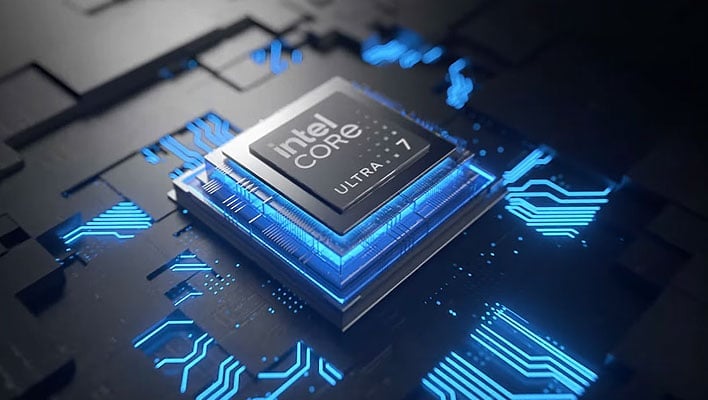
Before the launch of AMD’s Zen 5 CPUs, many people remarked that Intel’s Raptor Lake woes had left AMD with a competitive “opening” against rival Intel. However, given the modest performance and efficiency gains over the previous-generation Zen 4 parts in client workloads, the narrative has now shifted, with some commentators now feeling that it is actually Intel that has the opportunity to strike back against AMD with its Arrow Lake CPUs.
If you’re lost let us explain. Arrow Lake is the code-name of Intel’s upcoming processors set to bring Team Blue’s chiplet-like “tiles” to the desktop for the first time. Along with advanced packaging, Arrow Lake is bringing new architectures for both P-cores and E-cores as well as the GPU and likely NPU, as well. The latest leaks for Arrow Lake are fairly comprehensive. First, on Sunday, well-known “Korean PC Tech Fan” 포시포시 (better known by their Xwitter handle, @harukaze5719), posted the chart below listing the core configurations and clock rates of nearly all of Intel’s upcoming Arrow Lake desktop CPUs.

Chart: Benchlife
The chart actually originates with Chinese tech blog Benchlife, a noted source of many leaks and rumors. However, the site notes that it actually compiled this information from numerous prior leaks. Given that, the veracity could be in question, except that another leaker, Jaykihn, has now posted his own version of the chart that largely corroborates the above info and also adds further information:
There are a few errors in the data; Jaykihn’s chart has the wrong clock rate down for the 65W Core Ultra 9 285’s 7-8-core P-core boost clock (should be 5.3, not 4.6), and Benchlife swapped the lines for the Core Ultra 265F and 265T. 포시포시 points out the lack of Core Ultra 3 SKUs; Jaykihn says that his list only reflects chips “exclusive to the B0 die”, implying that Core Ultra 3 processors may be based on a different chip design.
For its part, Benchlife is focused on the fact that even the top-end Core Ultra 9 285K doesn’t reach the clock speed heights of the Core i9-13900K, much less the 14900K or their “KS” variants. That may not actually matter depending on how much Intel’s Lion Cove core improves IPC over Raptor Lake. The difference between a Core i9-14900K and Core Ultra 9 285K is approximately 5% in terms of clock rate, while Intel claimed a 14% IPC uplift between Lion Cove and Redwood Cove, the P-core architecture in Meteor Lake.
The more interesting changes are arguably to the E-cores, where Skymont is a radical evolution from the previous-generation Crestmont E-cores, with titanic gains in IPC. It may be the case that the single-core performance of Arrow Lake is (similar to Zen 5) a minor bump from the previous-generation parts, but we’re expecting the new CPUs to be absolute multi-core monsters even with the loss of Hyper-Threading.
Despite the delay of its Innovation event, Intel said that Arrow Lake was on track, and indeed, Benchlife confirms the release date for these parts to be October 10th. As with prior generations, we would expect Intel to launch the high-end “K” and “KF” CPUs first, with the rest of the family likely to come along later in the year or possibly as late as CES 2025.

